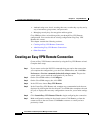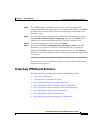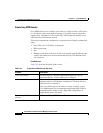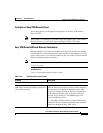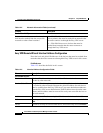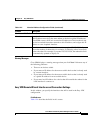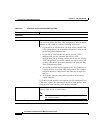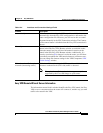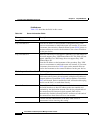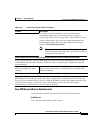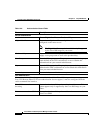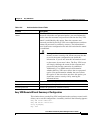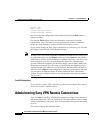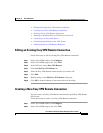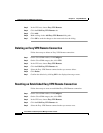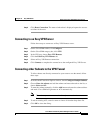
Chapter 12 Easy VPN Remote
Creating an Easy VPN Remote Connection
12-10
Cisco Router and Security Device Manager 2.5 User’s Guide
OL-4015-12
Field Reference
Table 12-5 describes the fields in this screen.
Table 12-5 Server Information Fields
Element Description
Easy VPN Servers
Easy VPN Server 1 Enter the IP address or the hostname of the primary Easy VPN
server or concentrator to which the router will connect. If you enter
a hostname, there must be a Domain Name System (DNS) server on
the network that can resolve the hostname to the correct IP address
for the peer device.
Easy VPN Server 2 The Easy VPN Server 2 field appears when the Cisco IOS image on
the router supports Easy VPN Remote Phase III. This field does not
appear when the Cisco IOS image does not support Easy VPN
Remote Phase III.
Enter the IP address or the hostname of the secondary Easy VPN
server or concentrator to which the router will connect. If you enter
a hostname, there must be a DNS server on the network that can
resolve the hostname to the correct IP address for the peer device.
Mode of operation with no identical addressing
Client Choose Client if you want the PCs and other devices on the router’s
inside networks to form a private network with private IP addresses.
Network Address Translation (NAT) and Port Address Translation
(PAT) will be used. Devices outside the LAN will not be able to ping
devices on the LAN, or reach them directly.
Network Extension Choose Network Extension if you want the devices connected to
the inside interfaces to have IP addresses that are routable and
reachable by the destination network. The devices at both ends of
the connection will form one logical network. PAT will be
automatically disabled, allowing the PCs and hosts at both ends of
the connection to have direct access to one another.
Consult with the administrator of the Easy VPN server or
concentrator before choosing this setting.



